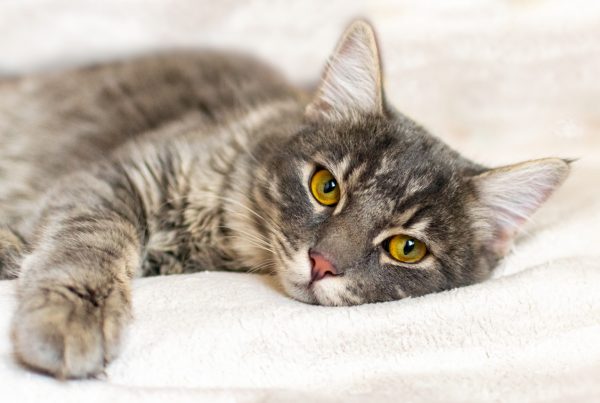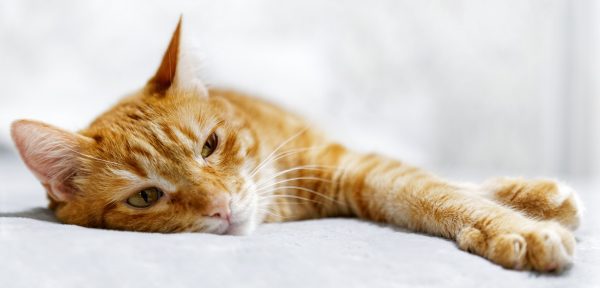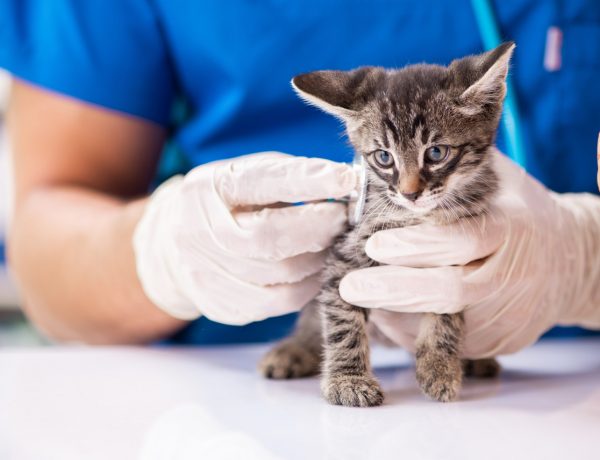Cat Anemia Symptoms
Anemia in cats is a condition in which the body experiences an abnormal shortage of red blood cells. Originating in the bone marrow, red blood cells have the vital function of transmitting oxygen and carbon dioxide throughout the body. A lack of hemoglobin may also trigger this condition.
Anemia is not a disorder itself, but rather a side effect of a much more significant ongoing problem within the body. Because of the essential role of red blood cells within the body, it can be quite dangerous when any animal or human becomes anemic one way or another.
Although a deficiency of red blood cells and hemoglobin may be life-threatening in extreme situations, cases that are minor may be easily dealt with and even reversed.
Signs of Anemia
The signs associated with anemia in cats largely depends on whether it is short-term or long-term. If it is short term, the signs may appear suddenly without warning. This usually indicates a hidden bleed internally.
 If it is long-term, the symptoms may take longer to come to fruition. Whatever may be the case, the symptoms are usually quite noticeable and should be taken seriously. Some signs of anemia in cats include:
If it is long-term, the symptoms may take longer to come to fruition. Whatever may be the case, the symptoms are usually quite noticeable and should be taken seriously. Some signs of anemia in cats include:
- Slow, lethargic behavior
- Decline in appetite
- Loss of weight
- White gums
- Bloodied stool
- Low blood pressure
- Rapid heart rate
One of the most distinct signs in some situations is the abnormal bleeding from the nose, mixed with vomit, or in the stool. If these signs are seen in close proximation, it is urgent to see a vet or go visit the animal hospital right away.
What Causes Anemia in Cats?
This blood shortage may be brought about in countless different ways, ranging from sustained injuries to diseases. Overall, however, some of the most frequently seen sources of the abnormal loss of red blood cells and hemoglobin include:
- Sustained trauma to the body
- Infestations (such as those from ticks or fleas)
- Inadequate vitamins and nutrition
- Infections (especially from viruses such as feline immunodeficiency and feline leukemia)
- Adverse reaction to ingested drugs or toxicity
- Bone marrow disease (aplastic anemia)
- Chronic kidney disease (CKD)
- Hypophosphatemia (may occur in a diabetic cat)
- Cancer
- Autoimmune disorders (self-destruction of the body’s red blood cells)
- Genetically-linked diseases (such as pyruvate kinase or porphyria)

Lastly, some may wonder if low iron levels could lead to an anemic cat as it does for humans. In cats, this is extremely rare. A cat would have to be on a very unhealthy diet for this to take place.
As one can see, there is a copious amount of potential root causes for this blood condition. Because of this, it is nearly impossible to pinpoint what exactly is causing the blood shortage without proper diagnostic testing.
Nonregenerative vs. Regenerative Anemia in Cats
When discussing anemia in cats, it is important to know the difference between anemia that is regenerative and nonregenerative.
- Regenerative Type. In this type of anemia, the body is able to naturally detect and aptly respond to a dangerous deficit in red blood cells. When this occurs, the body is able to produce a sufficient amount of blood cells to make up for the shortage. Some examples of this type are infections, inherited conditions, and blood loss due to an injury.
- Nonregenerative Type. Contrarily, this type of anemia is representative of the opposite situation. When red blood cells become scarce, the bone marrow fails to adequately respond to the need for more by repairing the situation. Some examples of this type are anemia in cats with kidney failure, diseases (autoimmune, tumors, bone marrow disease), and lack of proper nutrition.
Anemia in Kittens
Parasites
 In most cases, a kitten may become anemic in one of two ways. The first way is through the vulnerability of their young immune system to parasites such as fleas, ticks, worms, or lice.
In most cases, a kitten may become anemic in one of two ways. The first way is through the vulnerability of their young immune system to parasites such as fleas, ticks, worms, or lice.
Once one of these parasites infiltrate a kitten’s blood supply, they could end up leaching off of and consuming too much blood from the kitten. Though it is quite uncommon, it may trigger anemia. If parasites are expected, it is important to notify a vet immediately. Certified vets will know how to help a kitten with anemia best.
Neonatal Isoerythrolysis
This condition occurs shortly after birth when the kitten begins nursing and some of the mother’s milk is tainted with outside antibodies. These antibodies then go on to corrupt the red blood cells. This usually leads to hemolytic anemia in a matter of days.
Diagnosis and Treatment of Anemic Felines
Diagnostic Measures
If a cat is presenting with symptoms closely related to anemia, the vet may recommend one or more of the following diagnostic tests before officially diagnosing a cat with anemia:
- Complete blood cell count, or CBC (this will assist in determining how anemic a cat or kitten may be)
- Chemistry and electrolyte testing
- Urinalysis (to evaluate kidney functioning and identify any preexisting infection)
- Bone marrow biopsy
- Testing for feline leukemia (FeLV) or feline immunodeficiency virus (FIV)
Treatment
The most integral aspect of treatment is figuring out how to increase red blood cells in cats that are diagnosed as anemic. Cats or kittens that present with anemia are usually in desperate need of treatment, given the necessity for oxygen transportation throughout the body.
Unless the case is on the minor side, the cat or kitten will most likely require an immediate blood transfusion. This will work to quickly stabilize the cat’s internal state and get oxygen moving to the vital organs. Following stabilization, the vet will then work to identify the root cause of the anemic reaction.

Cat Anemia Home Treatment
Depending on the underlying cause of the red blood cell deficiency, the cat’s vet may recommend a treatment that continues at home. This at-home treatment may consist of deworming medications, antibiotics for various infections, or medicines for conditions that are autoimmune related.
Life Expectancy for an Anemic Cat
If a feline possesses an acute form of this condition, the prognosis may prove to be very poor. However, in felines with the chronic or the long-term type of anemia, they may live fulfilling and happy lives. As long as the underlying issue is diagnosed early and is effectively treated by a vet, the cat may live a long life without any further problems.
Learn more about additional feline health issues, like diabetes in cats. Cats can actually go in and out of diabetes without the pet owner knowing. It is critical to check a cat’s bloodwork daily before administering insulin, or the cat could die. Cancer in cats is more common than feline owners know as they get into their golden years.



